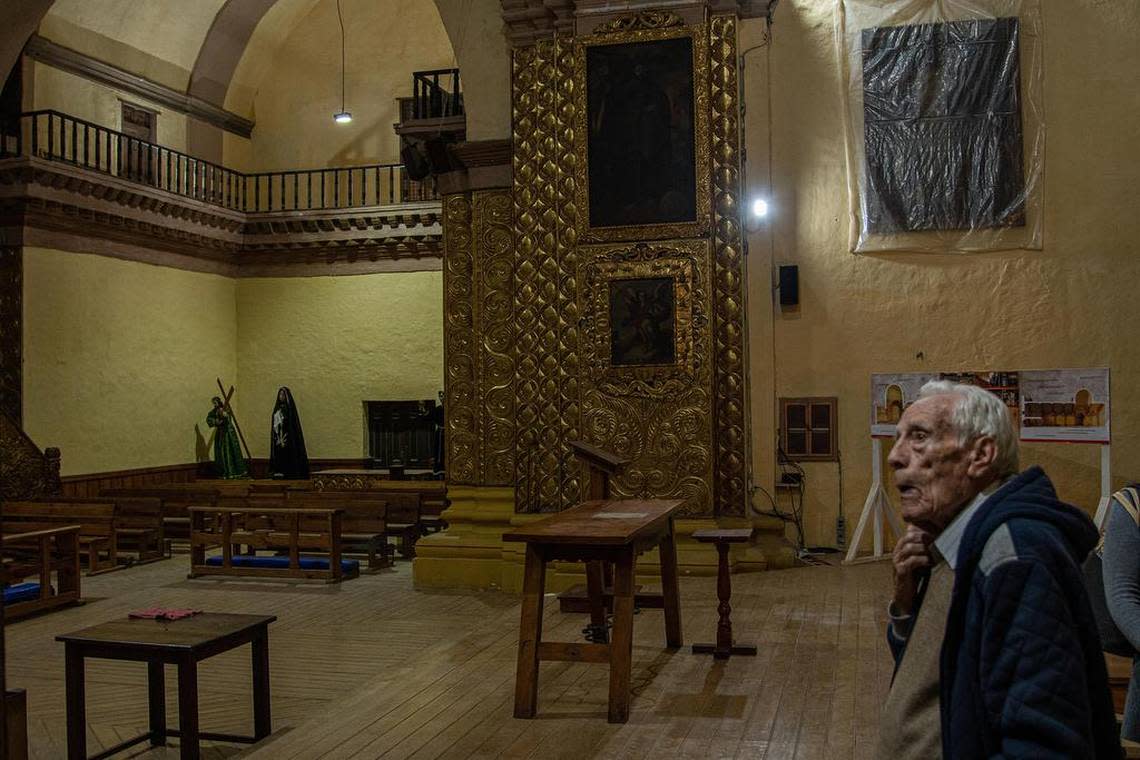México’s Santo Domingo convent reborn after 2017 quake destruction
The Santo Domingo convent, a jewel of southeastern México built in the 16th century, has been reborn from the ruins after its restoration following the powerful earthquake that hit the southeastern part of the country five years ago.
“The church is a work by the original peoples, by contractors, friars and with the support of the (Spanish) crown,” said Friar Pablo Iribarren Pascal, who is the director of the Santo Domingo Church in San Cristóbal de Las Casas, while discussing the restoration work just completed by the National Institute of Anthropology and History (INAH).
After five years devoted to reparation work, the Santo Domingo de Guzmán Church was inaugurated by Mexican President Andrés Manuel López Obrador and presented to the Catholic faithful in the colonial city of San Cristóbal de Las Casas.
The church sustained extensive damage in the 8.2-magnitude earthquake that struck the region on Sept. 7, 2017, and – in fact – it was one of the city’s 22 historic buildings selected by the INAH for reparation work.
Iribarren Pascal noted that the church, built in the Chiapas baroque style, is 476 years old and houses valuable cultural relics from the 16th through the 19th centuries.
“The facade is a hymn to the eucharist by the Dominican order, made in stucco,” he said, adding that its design “represents the wealth of nature in (the southern state of) Chiapas, (including) jungles, rivers and seas, all of this from a religious point of view.”

He said that this is the third large restoration project undertaken for the church, the first being done in 1563 after a tornado tore off the roof, followed by reparation work on the facade and now the five-year project to repair the damage from the 2017 quake.
The INAH, meanwhile, said that the work carried out from 2018 to 2022 included cleaning and filling in cracks in the walls, vaults and cupolas; restoring and strengthening the arches; along with structural and comprehensive reinforcement of the vaults and cupolas using struts and other means of support.
In addition, the building’s braces and clamps were examined and reseated to prevent cracks from developing, damaged areas were scoured and leveled, all the roofing was made impenetrable to rain, painting was done, illumination and electric lighting was installed, the altarpieces were cleaned, work on the relief in the choir was completed and grillwork and railings were installed outside the building with INAH support.
Pilar García Quintana, a member of the San Cristóbal de Las Cases Historic Center Consultative Council, acknowledged the impeccable work done by the INAH team and the local public to help out with the project.
“It’s been very difficult, but we want to recover San Cristóbal’s beautiful things, the monuments that are the city’s heritage, (and) the public has joined with volunteer groups in this case to fashion the surrounding bars (and grillwork) to protect the structure,” she said.
The remodeling of the historic church received financial support from institutional insurance and from the Natural Disaster Trust Fund (Fonden), the latter via a working agreement coordinated with the state of Chiapas’s Secretariat for Public Works, overseen by INAH.
The religious complex was founded by the Dominican Order and construction commenced on Jan. 7, 1563 – the first stone being laid by Bishop Francisco Marroquín – in the northern part of the city, in the traditional El Carrillo neighborhood. Today, it stands amid more than 900 shops and stalls where people sell handicrafts of the region.
Among the artistic jewels inside the church is the pulpit fashioned from a single piece of oak,the valuable religious tapestries and the altarpieces more than two meters (6.5 feet) high with reliefs showing forest leaves and angels. The interior work has been preserved in good condition.
The 2017 temblor had its epicenter in the southern state of Chiapas, killed 98 people and caused assorted damage to historic structures, including the Santo Domingo Church.
San Cristóbal de Las Casas was the capital of Chiapas state until 1892 and is still considered to be the state’s cultural capital.
